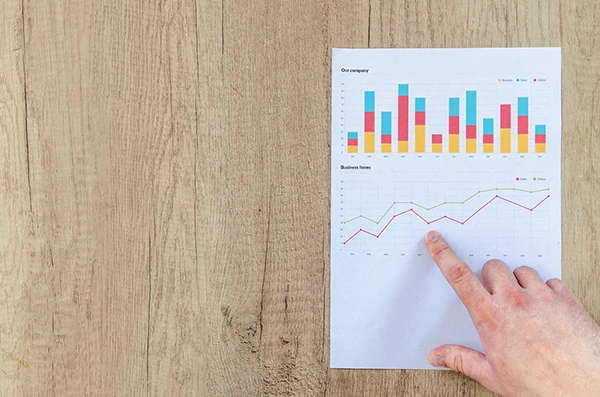How AI Is Transforming Amazon Product Research and Market Forecasting
- The Challenge: Amazon’s Data Deluge
- AI-Driven Product Discovery Tools
- Enhancing Demand Forecasting with Deep Learning
- Competitive Intelligence and Optimizing Pricing Decisions
- Next: Scaling Private-Label & Wholesale Decisions
- Tips for Using AI in Amazon Product Research and Market Forecasting
- Wrapping Up

Amazon’s marketplace demands precision. Business owners face overwhelming product choices and unpredictable demand. Competition is intense. Manual research consumes valuable time yet delivers incomplete insights. Operational friction hinders growth and erodes margins. You need actionable intelligence and not scattered data points.
Artificial Intelligence (AI) delivers clarity. Advanced algorithms process vast datasets at unprecedented speeds. They uncover hidden opportunities and forecast market shifts. AI transforms raw information into a strategic advantage. Forward-thinking sellers leverage these tools to secure sustainable profits and scalable operations. But these tools don’t replace human instincts. Instead, they sharpen it.
The Challenge: Amazon’s Data Deluge
Amazon operates at an unprecedented scale. Users navigate a marketplace with millions of active sellers and product listings. Each product on the platform has layers of data: search terms, price history, and review volume, among others. Exponential data growth creates operational hurdles.
One study highlights, “more than 80% of the big data handled in the e-commerce industry is text and unstructured data.” Managing and utilizing such requires a thoughtful strategy to optimize decision-making.
Traditional research methods don’t suffice. Manually tracking competitor pricing for a single product category requires excessive staff hours. Analyzing historical sales trends across relevant categories becomes impractical. Identifying genuine demand signals needs more processing time than human teams could realistically handle. Critical market shifts may go unnoticed until it’s too late.
The data volume is too high, and the market pace changes too fast. Sellers need to keep up. And this is where manual processes become obsolete. It’s crucial to implement novel solutions to modern problems. AI offers a helping hand.
AI-Driven Product Discovery Tools
Finding the next profitable Amazon product demands more than intuition. Success hinges on spotting genuine opportunities before saturation. Modern AI tools can translate vast market insights into clear signals.
Uncover these things with the right AI tool:
- Emerging Needs: Spotting keyword clusters and reviewing sentiments pointing to unmet customer desires.
- Competitor Weaknesses: Identifying products with consistently poor ratings or high return rates, signaling market dissatisfaction.
- Supply Gaps: Detecting areas where customer demand consistently outpaces available product listings.
- Authentic Trends: Separating fleeting fads from sustainable movements using historical data and seasonal patterns.
Using AI shows high-potential niches faster. It changes product discovery on Amazon. For example, you can identify a surge in demand for “biodegradable phone cases with card slots,” a specific trend revealed through search patterns and review analysis. In turn, you can focus on offering high-quality products within that category to fill the gap.
Such a capability mirrors the disruptive power of AI in other areas. In financial markets, Ross Givens and his $3 AI wonder stock leverages the power of AI to identify promising opportunities by spotting undervalued assets early. The same principle can apply in e-commerce, where using AI tools replaces guesswork with data-driven foresight.
Enhancing Demand Forecasting with Deep Learning
It’s difficult to predict demand. Customer preferences, market conditions, and the competitive landscape are constantly changing. Past averages and simple trendlines can provide numbers, but they’re not enough. Traditional forecasting models may be obsolete.
Deep learning improves forecasting. It duplicates how the human brain processes information. Layered neural networks show complex patterns. It’s far beyond what traditional analytics can detect. Below, we’ll look at some reasons why it works:
- Temporal Intelligence: It analyzes the order and timing of events to learn how past sequences predict future outcomes.
- Multi-Dimensional Processing: Dozens of dynamic signals are processed at the same time. It can include competitor price drops and social media buzz volume.
- Continuous Adaptation: Predictions are updated based on the specified frequency. Hence, information remains current and relevant.
The Operational Impact
What happens when you can predict demand using AI? Stockouts are minimal. You can maintain sales momentum by anticipating demand peaks. Dead stocks are also fewer. It cuts high storage fees and liquidation losses. Lastly, capital is optimized as you allow purchasing with cash flow based on projected revenues.
Sentiment and Review Analysis
Customer reviews are a gold mine of information. It’s impossible to go through them manually and deduce valuable insights. Knowing how to decode them is vital. Natural Language Processing (NLP) evaluates beyond star ratings. It analyzes the language in reviews to reveal frustrations, unmet needs, and emerging trends.
How NLP Can Reveal Opportunities
Five stars or one star on a customer review tells you what customers think. But there’s something more beyond the surface. NLP lets you know why they think that way. It rolls out the red carpet to understand what to do next.
- Shows Pain Points: It identifies recurring complaints that show specific reasons for dissatisfaction and signal opportunities for product improvement.
- Detects Subtle Shifts: NLP flags changing sentiments across product features before they impact sales.
- Validates Forecasts: You can correlate sentiment trends with sales data. Declining satisfaction can precede demand drops.
Competitive Intelligence and Optimizing Pricing Decisions
Manual tracking doesn’t work in a fast-moving market like Amazon. New sellers enter and prices shift by the hour. You must track competitor movements accurately. Doing so gives you the advantage. You can make well-informed strategies based on what other players are doing, especially if their strategies are working.
AI systems continuously scan competitor listings. They catch every price change the moment it happens. They track more than numbers. They analyze listing updates, promotion patterns, and inventory shifts across thousands of products. The technology detects price cuts designed to steal market share. It finds new product bundles that may impact your sales.
Smarter dynamic pricing is possible when you use AI tools. They recommend how you can respond to your competitor’s prices. AI calculates the optimal price by weighing multiple factors. The price sensitivity of your customers and current market conditions are some factors that come into play. You can prevent reactive pricing that destroys profits.
The benefits extend beyond pricing. This intelligence reveals competitor features that customers are praising in product reviews. They can guide your product improvements. It shows when rivals are struggling with stockouts. It creates windows for you to capture demand. It ties directly into forecasting. Doing so ensures your inventory and budgets align with actual market conditions.
Next: Scaling Private-Label & Wholesale Decisions
Should you launch a private-label product? Is managing a wholesale portfolio a better alternative? Regardless of what you pick, you need more than guesswork to succeed. Know what to source. Learn where to launch. Uncover how to stand out. All of these things are possible with the help of AI. You can start on the right foot and scale right as your business grows.
AI facilitates market gap identification. It cross-references customer complaints against best-selling products to spot missing features buyers want but can’t find. For example, if buyers keep on mentioning “better grip“ on kitchen tools, then you can identify an improvement opportunity in your product.
AI can also provide wholesale viability scoring. It calculates the balance between sales velocity and competition levels. Such is done by analyzing historical price fluctuations, seller concentration, and inventory turnovers in various niches.
Risk Assessment Before Commitment
Each decision has a risk. AI predicts potential pitfalls before you invest.
- Return Rate Alerts: Track rising return percentages in specific product categories. They can signal potential quality problems.
- Sentiment Deterioration Warnings: Identify products where negative reviews are rising faster than sales.
- Price War Detection: Spot categories where the top sellers are constantly changing their prices. That can signal unstable competition.
- Amazon Threat Analysis: Use patent filings and Amazon’s private label expansion history to estimate the likelihood of Amazon entering your niche.
Tips for Using AI in Amazon Product Research and Market Forecasting

AI revolutionizes Amazon selling. But its power depends on execution. Successful implementation requires thoughtful strategies that avoid costly mistakes and maximize profitability.
Prioritize Clean and Relevant Data
AI outputs depend on data quality. Regularly audit your sales histories to remove inaccuracies and outdated records. Focus on tracking meaningful metrics like conversion rates. Your data sources must include recent Amazon API updates to guarantee better precision.
Define Clear Objectives
Generic analysis wastes resources. Structure AI queries around specific goals. Focused insights can help narrow down AI responses, making sure they are useful and relevant to what you want to achieve.
Maintain Human Oversight
AI tools are getting more advanced. They detect patterns but can’t assess context. As such, they do not replace humans. Experienced team members should review AI-generated recommendations before full implementation.
Choose the Right Tool
At the end of the day, it all boils down to the AI tool you’re using. The choices are plenty, each with its colorful promise. Read reviews from other users and learn from their real-life experiences. Take advantage of free trials and different promos before committing to a paid subscription.
Wrapping Up
AI is altering the Amazon landscape. Product research and market forecasting are transforming from reactive guesswork into proactive strategy. These technologies deliver more than data analysis. They uncover hidden opportunities and predict trends before they surface. Sellers gain a competitive edge by leveraging the power of contemporary tools. Combined with human insights, AI is a revolution worthy of adoption. Those who fail to embrace it risk falling behind.
Did you know that in 2024, the Meta company reported 3.35 billion daily active users, and WhatsApp is one among…
Do you know that your modern web app is constantly at risk of being attacked by threats? Every year, attackers…
Creating content can feel like shouting into the void sometimes. You put in all that effort, share your passion, and…
In the fast-paced world of retail, every second counts. Even the famous American businessman, Mickey Drexler, stated, “People like consistency.…
Computer repair is a booming industry with several growth opportunities! The global computer hardware repair service market was valued at…
Are you a marketer? If yes, then you can understand how important insights are for effective advertising, and without them,…
Data loss is a devastating reality for many businesses in 2024! IBM study found that the average total cost of…
Data has emerged as a potent means of facilitating the future of learning in the last few years. In fact,…
Picture this: you’re getting tickets for a sports match, and suddenly, the website crashes, showing “Error 503.” It’s frustrating, right?…






